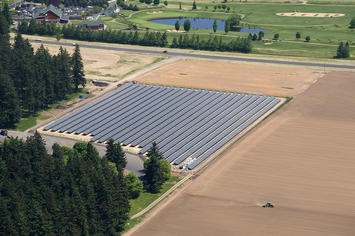
Our national divide is usually cast in terms of ideology, race, climate, and gender. But it might be more accurate to see our national conflict as regional and riven by economic function. The schism is between two ways of making a living, one based in the incorporeal world of media and digital transactions, the other in the tangible world of making, growing, and using real things.
Donald Trump, the irascible New York developer, focused on the places where the tangible economy was strong, but President Biden convinced enough voters in heartland states that their economic interests would be taken seriously. Some parts of the Biden agenda—measures to reshore industry, restore supply chains, and improve basic infrastructure—could unify the country across regional lines.
Biden’s early actions, however, focused on policies that are more popular in Manhattan and Malibu than Midland. This is painfully evident in the Administration’s early call for tight restrictions on fossil fuel development. President Biden has promised to spend $500 billion each year on abating climate change—about 13 percent of all federal revenue. Its economic impact, estimates economist Bjorn Lonborg, would reach $5 trillion, more than the entire federal budget.
Other actions—like massive new transit investments or policies that force high-density housing and racial quotas on suburbs—may please his base and the media, but are certain to arouse opposition throughout parts of the country where people work in factories, warehouses, farms, mines and the energy sector, live in lower density neighborhoods, and value the notion of upward mobility for most Americans.
Regionalism, American style
America has always been a nation of regions and interest groups, often in conflict with each other. Class and economic concerns underlay cultural and political struggles over the Revolution and Constitution. Not just a Marx can observe that the Civil War involved a conflict between powerful, rival economic interests. The slave-driven Southern economy rested upon the export of commodities to Britain and the rest of Europe—primarily cotton but also tobacco and other foodstuffs—while the North was an emerging industrial power whose ambition was to displace these same established powers.
The Civil War led to a consolidation of power in the great cities of the Northeast and Midwest, and the Second World War shifted influence further, largely to the West Coast. More recently this ascendancy has been challenged by other states, notably in Texas and the South, which have gained population, wealth, and political influence, while the still struggling heartland has emerged as the political “decider” in national elections.
Trump, in large part due to his flawed character, may have lost too many of those voters to win the election, but the parts of the country that continued to back him—like Texas and the South—remain ascendant. These states were gaining ground in terms of jobs and people before Covid, and generally have been rebounding faster than those on the coast. In contrast, the core Biden states—California, New York, New Jersey, and Illinois—continue to lose people and jobs.
Read the rest of this piece at American Mind.
Joel Kotkin is the author of The Coming of Neo-Feudalism: A Warning to the Global Middle Class. He is the Presidential Fellow in Urban Futures at Chapman University and Executive Director for Urban Reform Institute. Learn more at joelkotkin.com and follow him on Twitter @joelkotkin.
Photo credit: Oregon DOT via Flickr under CC 2.0 License.












